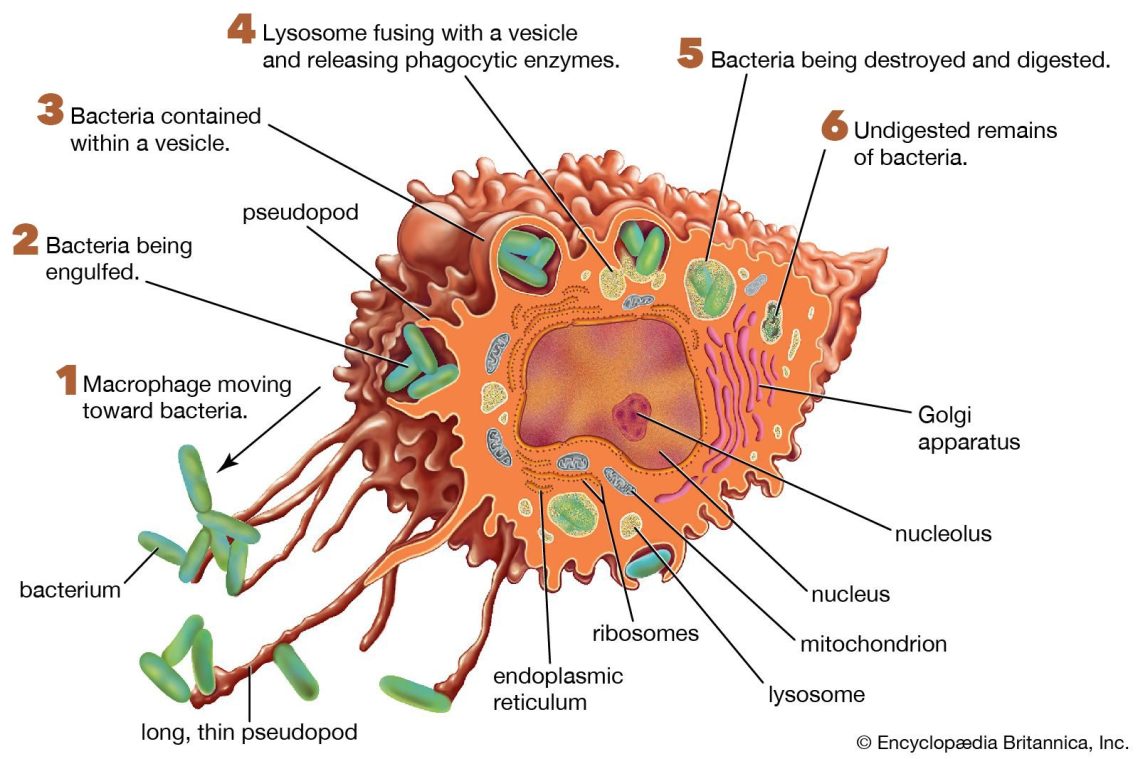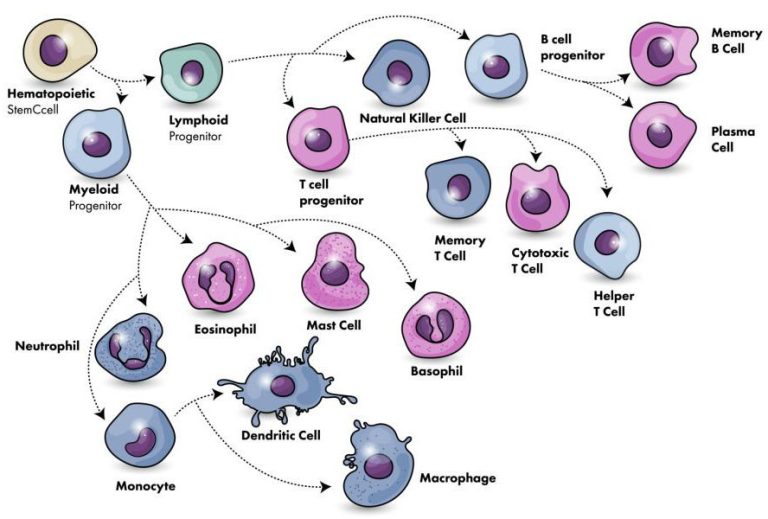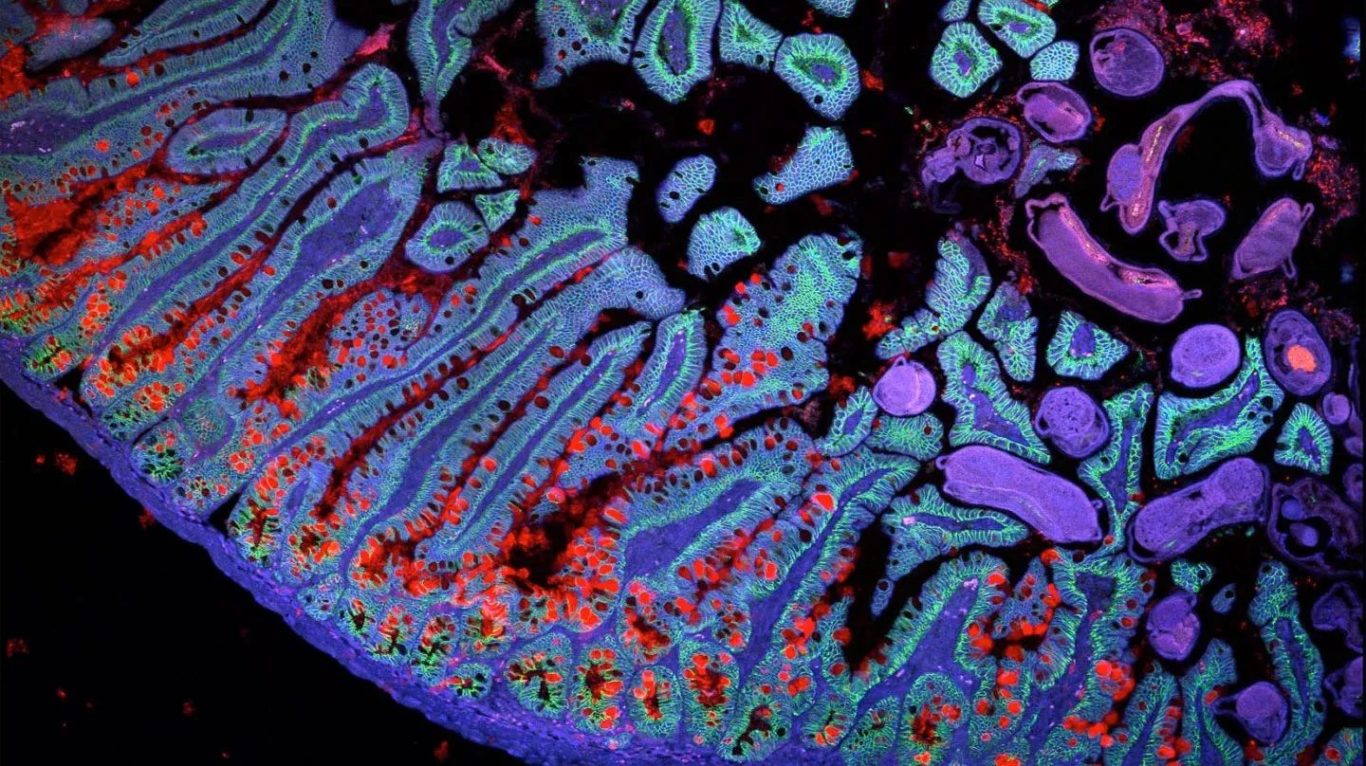17
The cell

A model of a single living cell, cutaway to show the interior
There are many organisms that have just one cell, (eg bacteria, amoeba, fungi etc). Most of them are very small.
You are different. A human being is made up of many cells –
37 trillion or thereabouts.
All of your trillions of cells have one thing in common (with a few exceptions): your DNA 'footprint' or 'genome', your unique genetic 'signature', is stored in the nucleus at the centre of the typical animal cell seen here.
The strands of DNA are tightly packed together, and if straightened out would be about 2 metres long for each cell. With trillions of cells, the total length of DNA in your body is around twice the width of our solar system. You may like to read that again.
So you are information – without information, you, and the entire living world, are nothing. This is not theoretical, the latest 'way-out' science theory, here today, gone tomorrow. This is coded data that can be seen, touched, decoded, interrogated and edited. It's the key to our existence. It challenges atheistic science to explain where it came from, because the only source of information that we know of is an intelligent mind.
Although generally having the nucleus in common, your cells vary considerably according to the special jobs they carry out. But if the cells in your body all have the same DNA, how is it they can vary so much?
Because they choose different parts of the DNA to suit their own particular function. That sounds clever – how do they do that?
Charles Darwin of course knew nothing about DNA or any of the other functions of the cell. The cell appeared to him to be quite simple, and he didn't waste time wondering how it came about. Today scientists recognise the huge problem of how the first living cell originated, let alone how 37,000,000,000,000 of them got together to form a single organism.
Different cells for different tasks
How many different kinds of cells are there?
Figures of around 3 – 400 have been suggested, but there may well be many more than that. All these different types of cell are essential parts of the various organ systems on which human life depends (11 or 12 of them altogether).
To take one of the most familiar as an example, your breathing (respiratory) system depends on two well-known specialised cells, the red and the white blood cells. Red blood cells make haemoglobin which allows them to carry oxygen in the blood; white blood cells help your body fight infection. Platelets in the blood work to prevent bleeding.
Other organ systems you will recognise are the digestive system, the skeletal system, the nervous system, and so on.


The immune system has a whole range of specialist cells to combat disease (see right). One of them, a macrophage, is shown above in the process of capturing and absorbing a hostile bacteria.
For a complete list of the body's various organ systems, see HERE.
In each system, these special cells all have different protein requirements. They have the machinery to switch on or off the genes required to produce the right proteins. Effectively each of these cells is running a different 'software program' specially tuned for that cell's particular job.
What is it that causes "certain cells to run these different programs?
How does the body know which cells need which proteins?
Where do these programs come from, and how are they encoded?
Remember that we're talking about thousands of different proteins.
How could such programming come to be? The level of control is off the charts..." 'Your Designed Body'– see Reference.
Finding out more about cells, including how they communicate with each other, has been and is now the subject of a huge international
collaborative research program, which has been christened 'The Cell Atlas'. For the scope and aims of this venture, see HERE.
This is how it is described:
"Creating the Human Cell Atlas is an enormous undertaking, larger even than the Human Genome Project, and is revolutionising our understanding of the 37.2 trillion cells in the human body. If the Human Genome Project gave us the “book of life”, the Human Cell Atlas captures how each cell in the body reads this book. It is only possible now thanks to global collaboration, technological and computational breakthroughs, and science at great scale."
That's a lot of brain power to explore something we are told came together by accident.
BROAD INSTITUTE

A section of the lower intestine. False colours show different cell types. For BBC Health news release see: https://www.bbc.co.uk/news/articles/c23829l8kzro
It is encouraging to find virtually no mention of evolution on the Cell Atlas website. This confirms what many believe, that Darwin's theory has little explanatory value. When it comes to the scientific 'nitty gritty', 'it happened by accident' is not a useful explanation for anything –
let alone for everything!
The Cell Atlas program was initiated back in 2016, but in November 2024 the journal 'Nature' published a series of over 40 research programs that had so far been submitted as part of the overall survey. Predicted completion date is 2026.
STOP PRESS BBC News Health 6 March 25
Yesterday the BBC announced the latest research on the proteasome – a tiny structure that is found in every cell of the body.
"Its main role is to chop up old proteins into smaller chunks so they can be recycled to make new ones.
But a series of experiments, detailed in the journal Nature, shows the proteasome detects when a cell has been infected by bacteria. It then changes structure and role. It starts transforming old proteins into weapons that can rip open the outer layer of bacteria to kill them."
HERE IS THE PROBLEM
"If you started with a single living cell, what would you need to do to generate all the cell types in the human body?
If you started with the capabilities of the cell, what would be needed for a large multicellular organ like the human body? Remember that the body must be alive and functional at each step along the way, and this requires solutions to every one of life's thorny problems at every step...
If this seems like a hard thing to do, that's because it is.
Even the best human engineers have no idea how to achieve even a small portion of the body's capabilities."
'Your Designed Body' see Reference

ONE BODY
"Just as a body, though one, has many parts, but all its many parts form one body, so it is with Christ"
wrote the apostle Paul (1 Corinthians 12:12).
Even with his very limited knowledge, it was clear to Paul that the human body was remarkable, a disparate collection of various limbs and organs all working together in harmony, and he saw it as a model for the Christian community in his day.
Today we are amazed how every extraordinary detail of the body presents the same picture. It is a picture, not of the 'dumb luck" of evolution, but the supremacy, intelligence and wisdom of the Creator.
REFERENCE: 'Your designed body' Steve Laufmann and Howard Glicksman MD Discovery Institute Press 2022
Laufmann is a systems engineer and Glicksman a physician
The cell

Staphylococcus bacteria, being destroyed
as its outer layer is torn open by antimicrobials made by the proteasome SEE HERE
We do not use cookies on this website. We do not collect any of your personal details, and our list of subscribers is not shared with any third party.
Intelligence and purpose in the natural world
We need your consent to load the translations
We use a third-party service to translate the website content that may collect data about your activity. Please review the details in the privacy policy and accept the service to view the translations.
